#Hatfield House Library
Explore tagged Tumblr posts
Text

@batmanisagatewaydrug set up a fun Book Bingo for 2025, and want to try and do it!
This planned list of books for me to read is extremely subject to change, especially since I always get a lot of books as holiday presents, but here's the plan as of this moment.
Literary Fiction: The Grapes of Wrath by John Steinbeck. My mother got me a bunch of Steinbeck for my birthday, since I liked Cannery Row, so let's see if I can do now what I couldn't in high school!
Short Story Collection: The Illustrated Man by Ray Bradbury. Another author I don't know super well but who has written at least some things I like.
A Sequel: Sweet Thursday by John Steinbeck. Like I said, my mom got me a bunch of Steinbeck and I like Cannery Row, so I'll try the sequel.
Childhood Favorite: A Connecticut Yankee in King Arthur's Court by Mark Twain. I read and loved three quarters of this as a kid- but I had to stop before what I knew would be the grim finish, where Twain's depression took hold. It's time I see it through.
20th Century Speculative Fiction: Anno Dracula by Kim Newman. I've come around on Newman, so I should finally try his Bad End Dracula AU.
Fantasy: Fool by Christopher Moore. I keep seeing this when I shelve things at the library and thinking 'I should get that out sometime' so let's make it sometime!
Published before 1950: Beowulf, translated by Burton Raffel. I loved the children's book Bea Wolf, and it gave me the urge I needed to find a good translation of the original.
Independent Publisher: Under the Pendulum Sun by Jeannette Ng. Gothic? Fairies? Dark historical fiction? Amazing cover? Sounds great.
Graphic Novel: Be Very Afraid of Kanako Inuki by Kanako Inuki. Another great cover that's already making me very afraid!
Animal on the Cover: Earthlings by Sayaka Murata. I loved Convenience Store Woman and this has a cute hedgehog on the cover, and that's all I need to know.
Set in a Country You Have Never Visited: Let the Right One In by John Ajvide Lindqvist. One of the books that's been on my tbr for the longest time, and I loved both film adaptations.
Science Fiction: Finna by Nino Cipri. I'm always down to read about genre-shifting trips through alternate dimensions.
2025 Debut Author: You are Fatally Invited by Ande Pliego. I have a weakness for riffs on And Then There Were None, plus this seems like the kind of book my library will order.
Memoir: The Complete Persepolis by Marjane Satrapi. I started this at someone's house and never finished it, so now is the time.
Read and Make a Zine: Archive.org has a bunch of issues of a Twin Peaks fanzine called Wrapped in Plastic, which I'm looking forward to browsing through! I hope it will give me ideas for what to create!
Essay Collection: The Collected Schizophrenias by Esmé Weijun Wang. Not much to say about this except that it sounds really fascinating.
2024 Award Winner: Chain-Gang All-Stars by Nana Kwame Adjei-Brenyah. This won the Alex Award (for adult books with good YA crossover appeal) and I've been curious about it since I worked at a bookstore and put in the order.
Nonfiction: The Madman's Library: The Strangest Books, Manuscripts and Other Literary Curiosities from History by Edward Brooke-Hitching. I would indeed like to learn about those books! Because I missed the "learn something new" part, I will read The Feud: the Hatfields & McCoys by Dean King.
Social Justice & Activism: Beyond Survival: Strategies and Stories from the Transformative Justice Movement by Ejeris Dixon and Leah Lakshmi Piepzna-Samarasinha. This has been recommended to me as a good starting point to learn about transformative and restorative justice, something I would like to understand better.
Romance Novel: Duke of Sin by Elizabeth Hoyt. Duke of Desire was great, so I'm eager for some more of that!
Read and Make a Recipe: I'm hoping to find something good from the Moosewood Cookbook, I need to learn more good vegetarian meals.
Horror: Diavola by Jennifer Marie Thorne. More gothics, and as always, I'm late to a book everyone else always loves!
Published in the Aughts: Great Granny Webster by Caroline Blackwood. Another book I always see on the shelves and always mean to get out next time when I'm not in the middle of something!
Historical Fiction: The Keep by F. Paul Wilson. Historical horror (with Jewish characters) is one of my favorite genres.
Bookseller or Librarian Recommendation: Poison Widows: A True Story of Witchcraft, Arsenic, and Murder by George Cooper. This was on the library website of recommended Philadelphia-set books, so I'll happily give it a try.
45 notes
·
View notes
Note
Are you able to do some sort of fanfic between Aiden Klein from the mourge files and a child reader? (Not romantic ofc.)
Where like he ends up treating us like Sally Hatfield? We are just more...behaved than her and don't run?
Aiden Klein x Child! Reader (platonic)
How did you end up here? You didn't know.
One moment you were running away from your shitty home and family in forest lawn. The next minute you're in a basement watching low quality public Christian shows.
Aiden Klein was the man who took you in. Or more accurately kidnapped you and holding you hostage. Not that you knew the difference.
You did know, however, that he was always kind to you. You would often run errands for your parents at the store and he would buy you a chocolate bar or whatever candy of your choice. Or you would be at the library whenever you were locked out of your home and he would be there reading to you or talk about the latest book you read. Or would sit on the park bench with you and listen to your woes and walk you back home everytime you got kicked out.
So it didn't ring any alarm bells in your head when you ran away and he found you and offered to let you stay with him as long as you like and never had to go back. A warm room and free food with the only few people who showed you an ounce of kindness. How could you possibly refuse?
There were a few weird things though. How he would never let you out of the house without close supervision, or allowed you to go to school and often asked to drink some of your blood from time to time. Bit you never left the house anyways with your old family you were constantly locked up. You hated school because of that mean Mr. Webb. And so what if he drank your blood? It wasn't alot at once and he feels you iron rich meals to compensate.
You supposed that you could get used to this.
(I hope you like this and feel free to ask again!)
Aiden Klein is a character from the morgue files which was creates by our lord and savior David Near. You should go check it out!
#ask box#answered#tmf#the morgue files#aiden klein#x child reader#fanfic#creepypasta#creepypasta fandom#send me requests#please flood my inbox#please and thank you
5 notes
·
View notes
Text
100 Year Old Film
Our Hospitality December 13th, 1923
On December 13th, 1923, Buster Keaton's second feature film, Our Hospitality, was released to the public. The film, co-directed by Keaton and John G. Blystone, is a hilarious and inventive satire of the famous Hatfield-McCoy feud, which pitted two rival families against each other in a bloody and violent conflict.
The film stars Keaton as Willie McKay, a young man who inherits his father's estate in the South, unaware of the feud that has been raging for decades. On his way there, he meets and falls in love with Virginia Canfield (played by Keaton's real-life wife Natalie Talmadge), the daughter of the head of the Canfield clan. When he arrives at his ancestral home, he discovers that the Canfields have sworn to kill any McKay on sight, except when they are inside their own house, where hospitality rules prevent them from harming a guest.
What follows is a series of hilarious and ingenious gags, as Keaton tries to stay alive and win the heart of his beloved, while avoiding the wrath of the Canfields. The film showcases Keaton's trademark physical comedy, as well as his remarkable attention to detail and historical accuracy. The film features a realistic recreation of an early 19th century steam locomotive, a thrilling chase sequence involving a horse, a bicycle, and a waterfall, and a spectacular stunt where Keaton hangs from a rope over a rocky gorge.
Our Hospitality is widely regarded as one of Keaton's best and most influential films, as well as one of the greatest comedies of all time. It was selected for preservation in the United States National Film Registry by the Library of Congress in 1995, as being "culturally, historically, or aesthetically significant".
If you are a fan of Buster Keaton, or of silent comedy in general, you should definitely watch Our Hospitality, or rewatch it if you have already seen it. It is a film that will make you laugh, marvel, and appreciate the genius of one of the greatest comedians and filmmakers of all time.
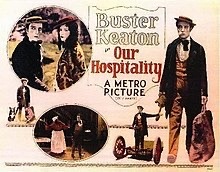


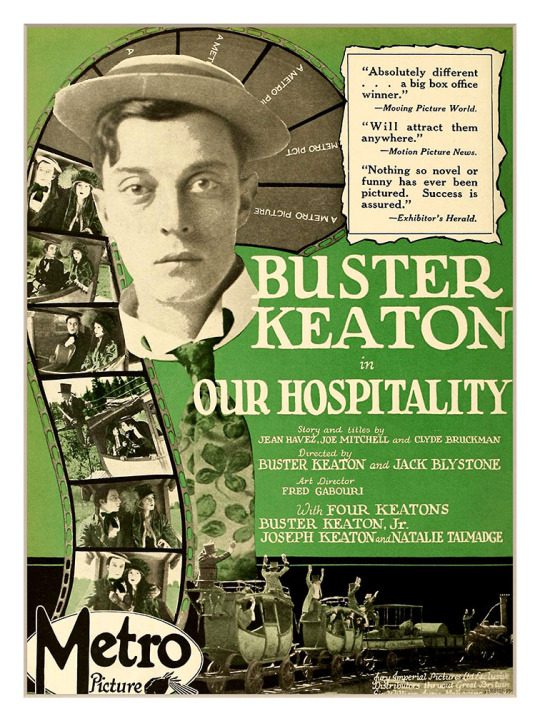
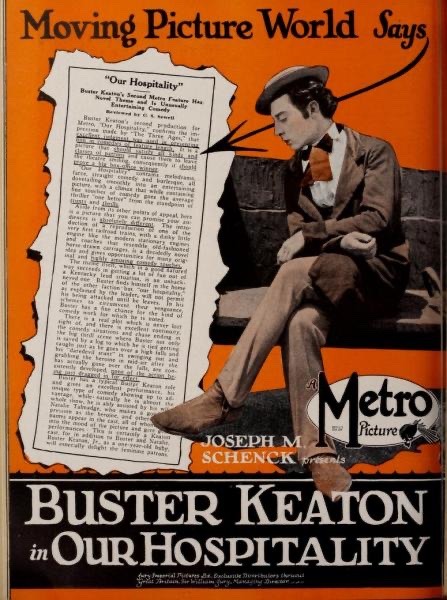
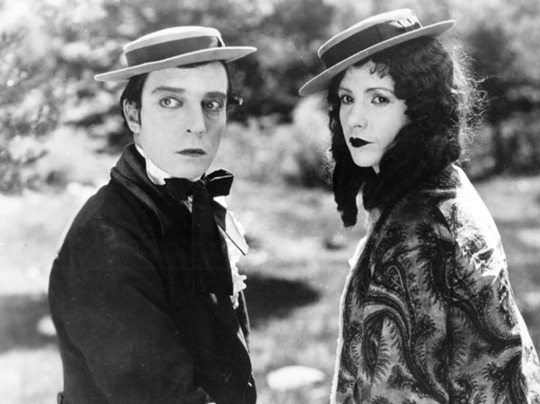
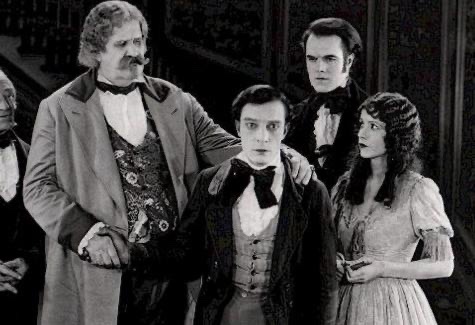

youtube
#silent film#silent comedy#silent cinema#silent era#silent movies#slapstick#100 years ago#100 years old#our hospitality#buster keaton#Youtube
1 note
·
View note
Text
Update 44 23/08/23
REDA Labs
After 3 months of constant work, we are proud to present the final video for our project. This was an amazing experience and we are very happy with the output. The environment was really elevated by the sound design and script with the help from our supporting team. We are really thankful to each and everyone who helped us to make this project a reality.
Main Team
Joshua Thomas -
Environment Artist
Lighting Artist
VFX Artist
Level Artist
Technical Artist
Editor
Uditraj Vadher -
Environment Artist
Level Artist
Cinematography
Technical Artist
Animation
Texture Artist Rigging Artist
Supporting team
Prop Creation
Sound design
Dennis Nikhil Raj - Music
Kelvin Mathew - Sound Design
Atharva Kulkarni - Mixing
Krishiv M - Recording Engineer
Conol Thomas-Lambert - Script and Voice over
List of external assets used -
Nosakhae. (2022). Toast Maker | Electric Sci-fi Gun. Sketchfab. [Online]. Available at: Electric Sci-fi Gun - Download Free 3D model by Nosakhae (@NosTeam)
AdamBetts. (2022). Sci-Fi Gun. Sketchfab. [Online]. Available at: Sci-Fi Gun - Download Free 3D model by AdamBetts
Lezalit. (2023). PEACEMAKER - SCI FI GUN. Sketchfab. [Online]. Available at: PEACEMAKER - SCI FI GUN - Download Free 3D model by Lezalit
Praneeth.Ganoji. (2022). Sci-Fi Gun Model. Sketchfab. [Online]. Available at: Sci-Fi Gun Model - Download Free 3D model by Praneeth.Ganoji
Fearell. (2020). Sci-fi Assault Riffle. Sketchfab. [Online]. Available at: Sci-fi Assault Riffle - Download Free 3D model by Fearell
Data Electronic Medical Document Modern. Alliesinteractive. Freepik. Available at: Data electronic medical document modern
Dead Body SVG, Deceased People, Dead People, Body Clipart, Deceased Bodies, Dead Men And Women, Cricut Cut File, Digital Download. WillieBees. Etsy. Available at: Dead Body SVG Deceased People Dead People Body Clipart
3D Sci-Fi Control Panels. ExecutoArt. TurboSquid. Available at: 3D Sci-Fi Control Panels
Alireza Farhadi. (2023). Sci-Fi Interior Laboratory Modern SciFi Station 3D Model. ArtStation. Available at: URL (Accessed: Date).
Voloshenko. (2022). Sci-Fi Wires Kitbash Pack 80. ArtStation.
Ehsan Kiani. (2023). 570 Sci-Fi Decals. ArtStation. Available at: URL
Alireza Farhadi. (2022). SciFi Light Pack 3D Model. ArtStation. Available at: URL
Modular SciFi Season 1 Starter Bundle. Jonathon Frederick. Unreal Engine Marketplace. Available at: Modular SciFi Season 1 Starter Bundle in Environments - UE Marketplace
Modular Scifi Season 2 Starter Bundle. Jonathon Frederick. Unreal Engine Marketplace. Available at: Modular Scifi Season 2 Starter Bundle in Environments - UE Marketplace
Scifi Hallway. Epic Games. Unreal Engine Marketplace. Available at: Scifi Hallway in Unreal Engine Marketplace
SuperGrid Starter pack. ZeOrb. Unreal Engine Marketplace. Available at: SuperGrid Starter pack in Unreal Engine Marketplace
Modular Sci Fi Office. Kelheor. Unreal Engine Marketplace. Available at: Modular Sci Fi Office in Unreal Engine Marketplace
Big Office. 1D.STUDIO. Unreal Engine Marketplace. Available at: Big Office in Unreal Engine Marketplace
Spline+. VOYAGER 3D. Unreal Engine Marketplace. Available at: Spline+ in Unreal Engine Marketplace
Megascans. Quixel. The world's largest scanned 3D asset library. Available at: Megascans - The Largest and Fastest Growing 3D Scan Library
Mixamo. Available at: Mixamo
0 notes
Photo
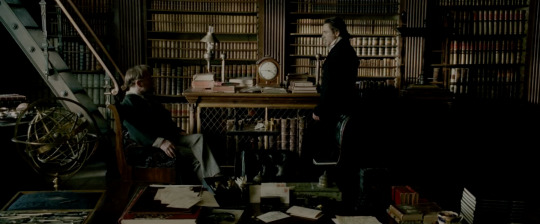
The interior of Hatfield House Library (Hatfield, Hertfordshire, England) in Guy Ritchie’s Sherlock Holmes: A Game of Shadows (2011). (Identified in the film as “the office of Professor James Moriarty.”)
2 notes
·
View notes
Text
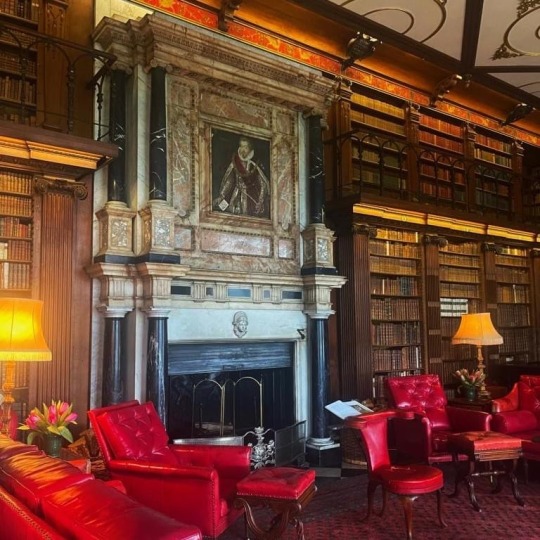
27 notes
·
View notes
Photo

Library at Hatfield House.
20 notes
·
View notes
Photo

King James Library, Hatfield House, Hertfordshire, England
69 notes
·
View notes
Text
The Shadows of Ghosts — or Grace visits Wals' house... Sort of...
I hope you’re ready for my insane geek post about how I have abstract-stalked my fave, fictional version of Walsingham by visiting his home from Elizabeth: The Golden Age (well, I’ve actually visited Hatfield House which stood in for his home.) I think it was meant to be his Seething Lane home - and before you ask, yes I have actually been to Seething Lane in London too, but it is not worth the effort except to point at the building called “Walsingham House” and go “oh, he is remembered!” (The real Walsingham in that case. Not Rush’s Walsingham. I digress.)
So, there are three main locations in Hatfield House, which are all open to the public (squee!), that stand in for various parts of Walsie’s home in The Golden Age (TGA). They are:
the Marble Hall
the Long Gallery
the Adam and Eve staircase
There’s still one short shot of William in the film at Francis’ home which I am struggling to place (where Francis is told he has a visitor and William pops out of a shady “corridor” waiting). I think it’s possibly part of the gallery or off the staircase but, nvm...
Let’s start with the Marble Hall, the first room you enter when you visit the house. I spent ages in here, it is grand af and very recognisable as the room in which poor, tired-out old Wals lies in his deathbed. Shekhar Kapur cleverly uses the “Rainbow Portrait” of Elizabeth, which hangs in the same position in everyday life as you see in the film, and sets up the scene so the portrait is presiding over Walsingham’s bed. (Ofc a man like Rush’s Wals would have the Queen watching over his bed... I’m sure his wife is well happy with that.)
The room also cleverly doubles as an entrance hallway, Kapur doing his camera trickery to get an angle on it from above. Have another look when you watch Wals get home and hand his chain to his servant - it’s the same room.
Captures from the film featuring the Marble Hall:

And my photos:

You’ll walk next through and up the Grand Staircase and through the King James drawing room before you get to the Long Gallery. It is long too! The Long Gallery is another location which doubles up as two different areas of Wals’ house in TGA: the dining room and Francis’ study/library. It’s very recognisable by the wooden panelling, the floor tile patterns and the fireplace.
First, here’s the dining scene (on a side note, this scene is crazily edited. You can tell it used to be much longer and the editors tore it to shreds):
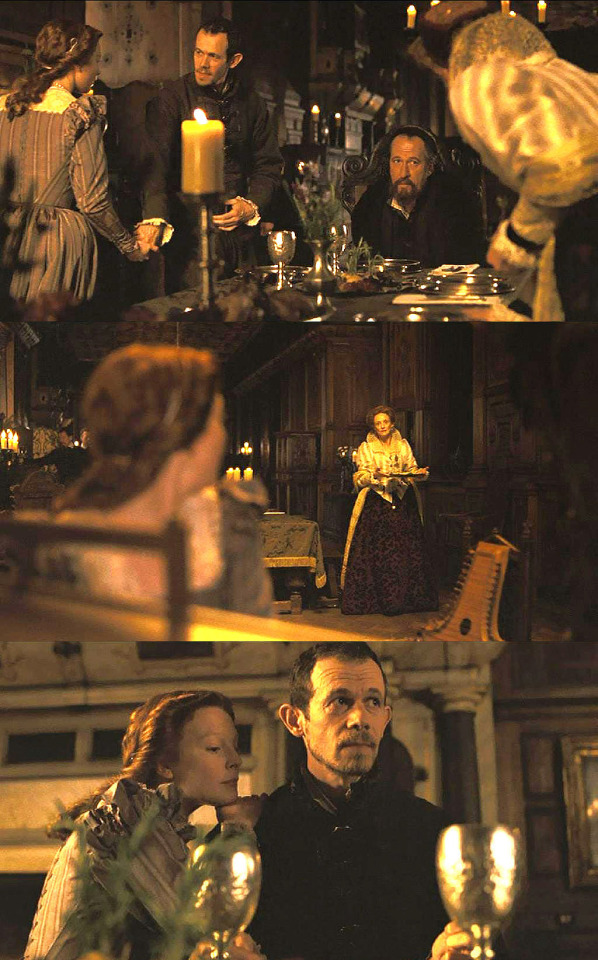
And here’s the long gallery in my photos for comparison. Check the ceiling, the flooring, the panelling and fireplace for reference points:
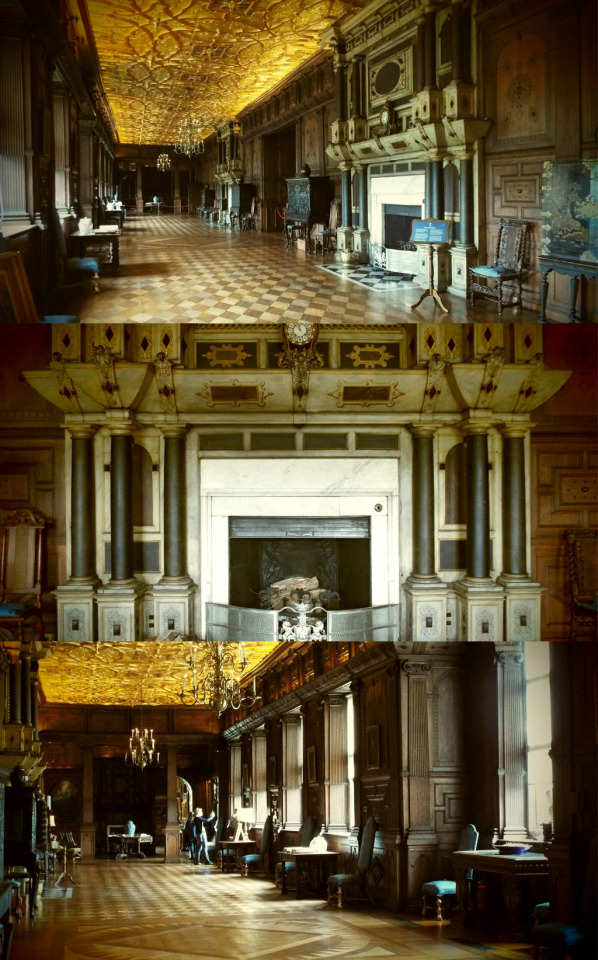
And here’s the other scene which uses the gallery - Wals’s study/library, where William makes not even a half-assed attempt to murder his brother. Harder to see the gallery beneath the set-dressing and props but if you check the floor and study the patterns on the panelling, you can see it:

And finally, the Adam and Eve staircase. You descend this after you have been through the “Winter” dining room and the library (neither of which, I am fairly sure, are in the film). Why is it called the Adam and Eve staircase, you ask? Apparently because a portrait of Adam and Eve used to be hanging in it, but though the portrait has moved to another room, the name remains.
Due to the one-way system in the house, you go down these stairs whilst the ghosts of William and Francis pass you going up.
Here are caps from the scene. Mark the bannisters, ceiling and wall panels:

And my photos. (Obvs they hung older portraits on the wall for the film, the ones currently hanging in there are very modern):
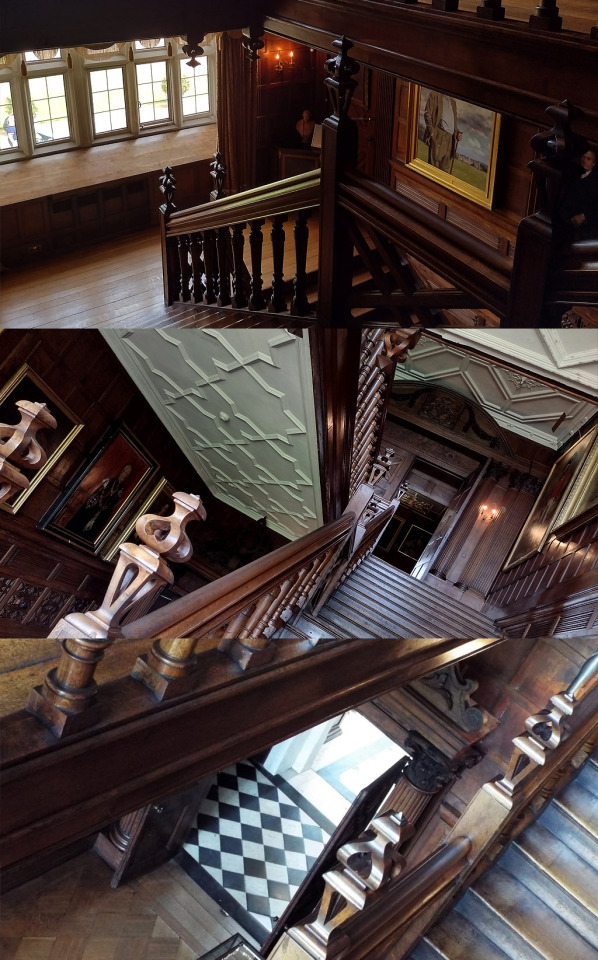
This concludes my talk on visiting the shadows of ghosts and basking in the warm glow that you are walking in the same footsteps as actors playing your faves. And it also hits a double whammy as actual history has also taken place here too, though not Tudor history as this house is Jacobean and built after Elizabeth’s death. But if you want Tudor history, look out the window and you’ll see what’s left of John Morton’s fifteenth century palace, the one which Elizabeth would have spent time in and recognised. Cool af!
And tbh, “actual history” is a bit of a misnomer because even though, for example, Geoffrey Rush was playing Walsingham in his London home when they filmed here 14/15 years ago, the making of that film and the presence of those actors is now also a part of history, though ofc not the same branch as the one the film is portraying. (It gets a bit meta after a while, doesn’t it...?)
Stay tuned for the nest instalment of Abstract Stalking when I travel north in October to be be reunited with that babe of an Elizabeth location, Durham Cathedral, and walk in the steps of my baby Wals again, and where I’ll then be doing a whistle-stop tour of Northumbrian Castles and hopefully pinpointing the beach where Thomas Elyot was killed by Daniel Craig’s priest, the castle Mary of Guise rode out from, and such like, before I finally return via Raby Castle and point out the locale of the river masque where Anjou shouts out “un trés grand clés!”.
(Welcome to my one-man fandom. I apologise in advance.)
#elizabeth 1998#elizabeth: the golden age#grace visits#grace travels#hatfield house#geoffrey rush#cate blanchett#shekhar kapur#abstract stalking#sir francis walsingham#queen elizabeth i#film locations
10 notes
·
View notes
Text

Second month of @batmanisagatewaydrug's 2025 Book Bingo reads! I haven't quite gotten a bingo yet, but I have filled a bunch of spaces. This month, those spaces were...
Horror: Witchcraft for Wayward Girls by Grady Hendrix. I was really excited for this, being a big Grady Hendrix fan, but it ended up being one of his weakest (especially in contrast to his last, How to Sell a Haunted House.) The pregnancy horror felt much scarier than anything involving magic, and like many writers of witch stories, he kind of wanted to have it both ways about them being wicked and empowering. I do always love his commitment to characters and setting, though, and I read through it pretty quickly.
Historical Fiction: The Vacant Chair by Kaylea Cross. This was the first of a bunch of historical romances I've been reading, about a Union soldier and nurse during the Civil War. It was gentler and more bittersweet than my usual romance reading, and it helped me discover that carefully tending to wounds both emotional and physical incurred in the service of a great cause may be something I really like and should read more of.
Librarian's Recommendation: Horror Movie by Paul Tremblay. This was in the staff recommendation section at the local library, with everybody's favorites from 2024, and like other Tremblay books I've read, it turned out to be a short, well-written little nightmare that was more about atmosphere than resolution. I love the use of stories in stories, and an in-universe cult movie will automatically grab my attention.
Debut Author: You are Fatally Invited by Andi Pliego. I'm always excited by riffs on And Then There Were None, no matter how played out it may be, and this was the kind of fun, murderous popcorn read that I was hoping for. A bunch of thriller writers go to a big fancy house on an island, and someone begins to knock them off- but that's on top of someone else's separate violent vengeance plans! This would be a good book to read on vacation.
Essay Collection: Monsters: A Fan's Dilemma by Clair Dederer. This colletion, in which Dederer examines her feelings towards various artists who have proven to be bad people, really moved me. She uses "monster" to mean "once you know something about this artist, you can't un-know it", but her feelings to each one are highly unique. This is part of her argument- that our reactions to art are so personal and emotional, we can't have one consistent rule for how we are allowed to feel about them and whether we an still enjoy them. I really liked that this was reflective rather than didactic- it doesn't tell you what you should do, it examines all the things that go into how we react and relate to art and artists.
Nonfiction: Learn Something New: The Feud: The Hatfields and McCoys by Dean King. A great entry in one of my favorite subgenres, historical true crime! (And between this, the civil war romances, and some other books I've been reading, the theme of "people killing each other in 19th century America.") I'd heard of the Hatfields and McCoys as a legendary feud, but didn't know much beyond that. It turns out that, holy shit, so many people got killed, for reasons that included leftover Civil War tensions, vigilante justice, livestock theft, and grudges taking decades to ferment. King also goes into how contemporary newspapers turned this into a "look at these dumb hicks!" freakshow, and seems to have been very honest and respectful himself in working with today's Hatfields and McCoy's to get the accounts passed down to them. I highly recommend this book.
8 notes
·
View notes
Text
Did anyone else notice that they used a lot of the same sets in Rebecca as they did in Enola Holmes?
The library was a big one, same with the hallways.
Update: confirmed, both movies used the same house, Hatfield House, for a bunch of their main scenes.
41 notes
·
View notes
Text
I Could Be Every Color You Like
October 3, 2021
Prompt - Full of Colors
Characters - Bentley and various others
Notes - This gave me so many ideas for one-shots.
“Why does that kid like art so much?”
He'd heard that question a lot over the years. It was a simple question and, to be frank, not many knew the answer. The youngest of the Murphy brothers was a chatty fourteen-year-old who was usually seen holding a pen or marker to something. It was only natural that people asked questions, he supposed. It wasn’t normal for people to walk around, drawing everything in sight, but that’s just the way Bentley was.
Bentley was an enthusiastic artist and had been for as long as he could remember. Of course, he usually did so for fun, coloring on napkins and such, but his art was always meticulously done. He’d learned to draw from his mom when he was really little. Miles recalled once that Bentley had drawn all over one of their bedroom walls when he was three, but his mom was so happy with how it looked that she refused to wash it off or paint over it. Bentley was just an artist through and through - it was what he was good at.
In school, the teachers that knew Miles and Royce expected Bentley to be just like one or both of them. First was the oldest - Miles, the hardworking, above-average student who had excellent manners and was part of both the automotive department and the school newspaper before graduating early. Then came Royce, the kid with straight A’s since kindergarten who spent most of his free time studying in the library or writing in a journal. But, when Bentley came along, their expectations went out the window.
Bentley was far more artistic than his brothers, doodling in the margins of his paperwork and turning it in, only to receive a note from the teachers, telling him to please stop. While he kept his grades up, even after Miles left for Florida, he could never seem to meet the precedent set forth by his brothers. His teachers tried to talk with his father about his attention problems and constant drawing, but the man never answered the phone. When he did, he’d answer in the same manner every time before hanging up - “Did he kill someone? No? Then leave me the hell alone.” After a while, the teachers stopped caring as much and left him alone, which was nice.
The only teacher he’d liked was Mr. Samuel Hatfield, his art teacher in middle school. The man was a giant at six foot seven but had the biggest heart in the building. He took his time with each of his students, making sure they understood what concepts he was teaching them and could handle their own. For once, Bentley could claim the position of teacher’s pet with pride. The teacher took pride in Bentley’s artwork, using them as examples for other classes and, occasionally, the upperclassmen who needed encouragement.
It felt good to be appreciated.
So, when Royce whispered to him one night in the confines of their bedroom that they’d set aside enough money to move in with their older brother, he felt torn. He desperately wanted to move in with Miles, far away from their father, but he also wanted to stay so he could continue feeling special for his art. It was all he felt he was good at and he loved feeling important, but his love for his brother outweighed that a million times over so his decision was nearly instantaneous.
The next day, after working his busboy job at the diner on the edge of Main Street, he took off on his bicycle for the art shop next to the library, using his collective tip money for the day - a whopping seven dollars and fifty-four cents, nearly triple what he usually got - to buy a small sketchbook and a discounted paint set. The rest of his money, he planned on pocketing. He and Royce would be leaving soon anyway, what did it matter what he spent the extra cash on now?”
The cashier frowned at Bentley as he counted his money, coming up just a couple of quarters short. He sighed, debating on which item he wanted to buy more. Just then, the door jingled next to him and he instinctively looked up, meeting gazes with his art teacher.
“Hi, Mr. Hatfield,” Bentley greeted quickly before turning back to his purchase.
“Well if it isn’t Bentley Murphy,” the art teacher greeted. “Why am I not surprised to see you here. Buying anything good, kiddo?”
“A goodbye gift,” Bentley claimed with a grin. “My brother and I are leaving town to be with our big brother.”
“Ah,” Mr. Hatfield exhaled. “Is this a gift for your dad or your older brother?”
“Nope,” Bentley exclaimed. “This is for me. Something to remember Myrtle Beach, I guess.”
The teacher nodded slowly, taking in the information as Bentley spoke. “So, where does your older brother live again?”
‘Uh oh. Too much info,’ Bentley thought to himself. ‘Don’t get caught. They’ll call the cops if they know where we’re really going. Be smart like RJ. Think, think, think.’
“California,” he lied in feigned excitement, sending his teacher a brilliant smile. “He moved there a couple years ago to be with a girl he liked who moved to Los Angeles.”
The teacher nodded again and smiled. “Well, since this is a parting gift, I’ll cover it, kid.” The man reached into his pocket and pulled out a wallet.
“Actually,” Bentley began, “I think I’ll put the paint back-”
“Leave it, Mr. Murphy,” Mr. Hatfield stated firmly, setting down some money. “It's just some paint. I have no problem helping you to further your talents. Save your cash for spending time with your brother.”
The cashier took the money from Mr. Hatfield and bagged Bentley’s items before handing them to the fourteen-year-old. Bentley and the man said their goodbyes before Bentley went outside and hopped on his bike, riding quickly toward home. When he arrived home and found only Royce there, the two boys packed their bags and left not long after, leaving only a simple note in their place. The next fifteen or so hours were spent biking to their Uncle Tommy’s house - a man who had despised his sister’s husband since he’d met the man and had been encouraging the boys to leave. Once they arrived, they took the man’s car - with his permission and knowledge, of course - and took off for Florida. Ten hours later, they arrived pulled into the town, a sign with bold letters saying “Welcome to St. Pete Beach” being their only welcoming committee.
Royce pulled Uncle Tommy’s car into what they believed was Miles’ address, if his letters were anything to go by. They got out of the car and knocked on the door a few times before anyone answered. It was just barely eight in the morning so it wasn’t unexpected, but the anticipation was killing them slowly. Bentley was mildly surprised to see his oldest brother - who looked like he was just woken up by them - whip open the door, wiping his eyes a few times before pulling them both into a tight hug. They were shown to their room, finding it decked out in just about anything Miles had found that he’d thought they would like. To Bentley’s surprise, a brand new art book and some canvases were laid out on his bed, accompanied by various types of paints, markers, and pencils.
Their brother’s friends became family to them and they were accepted fairly quickly. Lela set aside time every day just to paint with him on the beach. Mick would teach him and his brothers photography in her spare time. Butchy took him and Royce for walks to the park so Royce could write in peace while Bentley drew in his sketchbook. Tanner took him to an art gallery on the edge of town just for fun. It was like being an artist was something to be proud of. Like there wasn’t any competition to have better grades or better abilities. It was an air of tranquility that the fourteen-year-old hadn’t felt since his mom approved of his artwork as a kid.
Over time, he began noticing the colors of people he spent the most time with. Whether it was the color of their eyes or in the things they surrounded themselves with or their favorite colors, Bentley saw them each in a different light. If he said them out loud, it would make sense to absolutely no one, but that was fine by him. He made sure it came across in his artwork instead of in his words.
For instance, Miles gave off rays of baby blue with a hint of red - calmness, safety, and love - so those were the colors Bentley used to draw his oldest brother with most. Royce was a brilliant, sunset orange - smart, vibrant, and playful - and it suited the middle brother better than he ever cared to admit. Mick and Butchy together were green with dashes of lavender, a colorful combination of love, strength, and balance - a source of protection and love that was unending and reliable. Lela was pale pink, full of innocent love for those around her.
So, when asked why he loved art so much, Bentley had only one answer to give: the colors.
2 notes
·
View notes
Photo
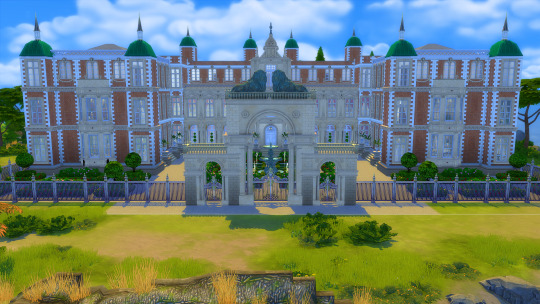

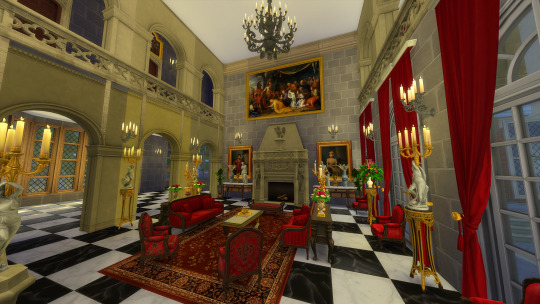

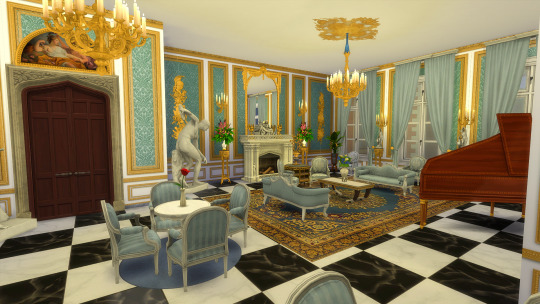
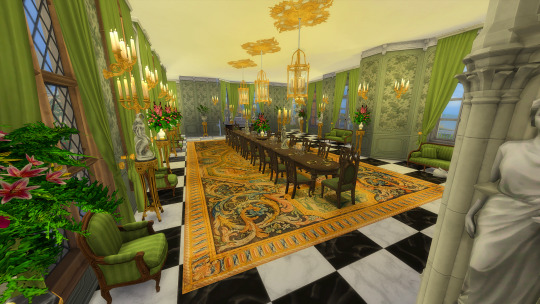
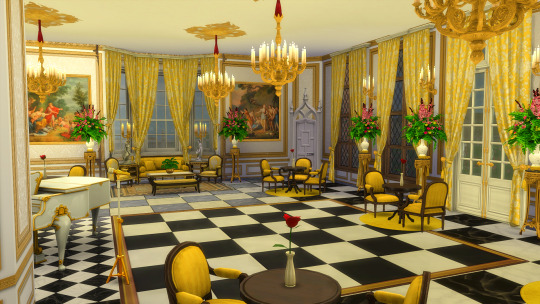

Hatfield House:
64 x 64
$5,104,895
Residential Lot
15 Bedrooms
17 Bathrooms
Library
Ballroom
Music Room
Office
Art Gallery
Full list of CC and download link after the cut
Required CC:
@harrie-cc
The BAFROOM Set
Heritage Collection - Part 1
Heritage Collection - Part 2
5K Follower Gift
Tiny Twavellers Set
The KICHEN set
@felixandresims
ALL CONTENT
@the-regal-sim
Bouquet
DOWNLOAD
Side note:
Included within the download folder is a text document containing links to all the required content. I have also included a few pieces of CC of creators that have went dark or whose content is no longer reachable.
Important update:
I replaced the download link in the post to a new one since I had to delete and re-upload the file since I missed a few things and made an oops haha.. Apologies for any inconveniences that anyone may have experienced during the downtime.
48 notes
·
View notes
Text
Hatfield House




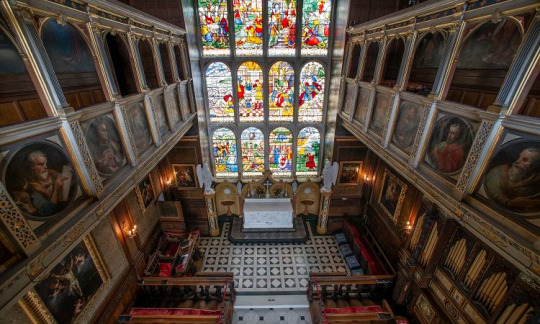

Hatfield House is located in Hertfordshire, England. The Jacobean house was built in 1611 by Robert Cecil, the 1stEarl of Salisbury. The house was lavishly embellished for the Royal Court and has state rooms decorated with paintings and tapestries. The house has an intricately carved grand staircase, a private chapel with a rare stained glass window, the King James Drawing Room, the Chinese Bedroom, the Long Gallery, the North Gallery, the Winter Dining Room, the Armory, the Victorian Kitchen, and the Marble Hall. There’s also a Library with a collection of more than 10,000 volumes dating from the 16thcentury to the present, and a Banqueting Hall located in what remains of the Old Palace, which was built in 1485 by Bishop Ely. The Old Palace is available for hire as a corporate or wedding venue. For over 400 years, the estate stayed in the Cecil family. Currently, Hatfield House is under ownership by the 7thMarquess and Marchioness of Salisbury. Hatfield House and Gardens are open to the public. The house sits on 1,000 acres with the gardens covering 42 acres, which includes an orchard, scented plants, herb gardens, water parterres, terraces, fountains, a sundial garden, a foot maze, and extensive parkland with three different length footpaths. The estate has a restaurant and a store. In 1558, Lady Elizabeth Tudor was sitting beneath an oak tree at her Hatfield estate when she received the news that she was the Queen of England. Hatfield House is one of the ten Treasure Houses of England.
8 notes
·
View notes
Photo

The interior of Hatfield House Library (Hatfield, Hertfordshire, England) in Yorgos Lanthimos’s The Favourite (2018). (Identified in the film as Kensington Palace.)
3 notes
·
View notes
Text

The Library at Hatfield House
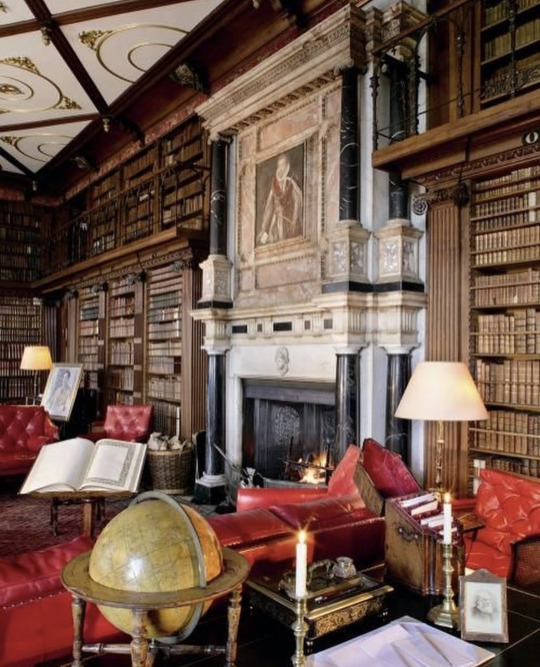
14 notes
·
View notes